Publications
See Google Scholar for a full publication list.
2025
-
 Learned, uncertainty-driven adaptive acquisition for photon-efficient scanning microscopyCassandra Tong Ye, Jiashu Han, Kunzan Liu, Anastasios Angelopoulos, Linda Griffith, Kristina Monakhova, and Sixian YouOptics Express, 2025
Learned, uncertainty-driven adaptive acquisition for photon-efficient scanning microscopyCassandra Tong Ye, Jiashu Han, Kunzan Liu, Anastasios Angelopoulos, Linda Griffith, Kristina Monakhova, and Sixian YouOptics Express, 2025Scanning microscopy systems, such as confocal and multiphoton microscopy, are powerful imaging tools for probing deep into biological tissue. However, scanning systems have an inherent trade-off between acquisition time, field of view, phototoxicity, and image quality. This often results in noisy measurements when fast, large field of view, and/or gentle imaging is needed. Deep learning could be used to denoise noisy microscopy measurements, but these algorithms can be prone to hallucination, which can be disastrous for medical and scientific applications. We propose a method to simultaneously denoise and predict pixel-wise uncertainty for scanning microscopy systems, improving algorithm trustworthiness and providing statistical guarantees for deep learning predictions. Furthermore, we propose to leverage this learned, pixel-wise uncertainty to drive an adaptive acquisition technique that rescans only the most uncertain regions of a sample, saving time and reducing the total light dose to the sample. We demonstrate our method on experimental confocal and multiphoton microscopy systems, showing that our uncertainty maps can pinpoint hallucinations in the deep learned predictions. Finally, with our adaptive acquisition technique, we demonstrate up to 16x reduction in acquisition time and total light dose while successfully recovering fine features in the sample and reducing hallucinations. We are the first to demonstrate distribution-free uncertainty quantification for a denoising task with real experimental data and the first to propose adaptive acquisition based on reconstruction uncertainty.
@article{ye2025learned, title = {Learned, uncertainty-driven adaptive acquisition for photon-efficient scanning microscopy}, author = {Ye, Cassandra Tong and Han, Jiashu and Liu, Kunzan and Angelopoulos, Anastasios and Griffith, Linda and Monakhova, Kristina and You, Sixian}, journal = {Optics Express}, volume = {33}, number = {6}, pages = {12269--12287}, year = {2025}, } -
 System- and Sample-agnostic Isotropic Three-dimensional Microscopy by Weakly Physics-informed, Domain-shift-resistant Axial DeblurringNature Communications, 2025
System- and Sample-agnostic Isotropic Three-dimensional Microscopy by Weakly Physics-informed, Domain-shift-resistant Axial DeblurringNature Communications, 2025Three-dimensional subcellular imaging is essential for biomedical research, but the diffraction limit of optical microscopy compromises axial resolution, hindering accurate three-dimensional structural analysis. This challenge is particularly pronounced in label-free imaging of thick, heterogeneous tissues, where assumptions about data distribution (e.g. sparsity, label-specific distribution, and lateral-axial similarity) and system priors (e.g. independent and identically distributed noise and linear shift-invariant point-spread functions) are often invalid. Here, we introduce SSAI-3D, a weakly physics-informed, domain-shift-resistant framework for robust isotropic three-dimensional imaging. SSAI-3D enables robust axial deblurring by generating a diverse, noise-resilient, sample-informed training dataset and sparsely fine-tuning a large pre-trained blind deblurring network. SSAI-3D is applied to label-free nonlinear imaging of living organoids, freshly excised human endometrium tissue, and mouse whisker pads, and further validated in publicly available ground-truth-paired experimental datasets of three-dimensional heterogeneous biological tissues with unknown blurring and noise across different microscopy systems.
@article{han2024system, title = {System- and Sample-agnostic Isotropic Three-dimensional Microscopy by Weakly Physics-informed, Domain-shift-resistant Axial Deblurring}, author = {Han*, Jiashu and Liu*, Kunzan and Isaacson, Keith B. and Monakhova, Kristina and Griffith, Linda G. and You, Sixian}, journal = {Nature Communications}, volume = {16}, number = {1}, pages = {745}, year = {2025}, } -
 Lyme disease increases risk for multiple gynecological conditionsPaige S. Hansen Colburn, Grace Blacker, Sarah Galloway, Qingying Feng, Prasanna S. Padmanabham, Guido Pisani, Brandon T. Lee, Grace Loeser, Monika W Perez, Kunzan Liu, Jade Kuan, Emelia von Saltza, Satu Strausz, Lisa M. Mattei, Sophie VanderWeele, George R. Nahass, Amie Kitjasateanphun, Rangarajan Bharadwaj, Hari-Hara SK Potula, Maia Atzmon Shoham, Finngen, Victoria L. Mascetti, Eric Gars, Hanna M Ollila, Kaylon L. Bruner-Tran, Irving Weissman, Sixian You, Beth Pollack, Linda Griffith, Nasa Sinnott-Armstrong, and Michal Caspi TalmedRxiv, 2025
Lyme disease increases risk for multiple gynecological conditionsPaige S. Hansen Colburn, Grace Blacker, Sarah Galloway, Qingying Feng, Prasanna S. Padmanabham, Guido Pisani, Brandon T. Lee, Grace Loeser, Monika W Perez, Kunzan Liu, Jade Kuan, Emelia von Saltza, Satu Strausz, Lisa M. Mattei, Sophie VanderWeele, George R. Nahass, Amie Kitjasateanphun, Rangarajan Bharadwaj, Hari-Hara SK Potula, Maia Atzmon Shoham, Finngen, Victoria L. Mascetti, Eric Gars, Hanna M Ollila, Kaylon L. Bruner-Tran, Irving Weissman, Sixian You, Beth Pollack, Linda Griffith, Nasa Sinnott-Armstrong, and Michal Caspi TalmedRxiv, 2025 -
 Self-localized ultrafast pencil beam for volumetric multiphoton imagingHonghao Cao, Li-Yu Yu, Kunzan Liu, Federico Presutti, Subhash Kulkarni, and Sixian YouarXiv preprint arXiv:2504.11618, 2025
Self-localized ultrafast pencil beam for volumetric multiphoton imagingHonghao Cao, Li-Yu Yu, Kunzan Liu, Federico Presutti, Subhash Kulkarni, and Sixian YouarXiv preprint arXiv:2504.11618, 2025 -
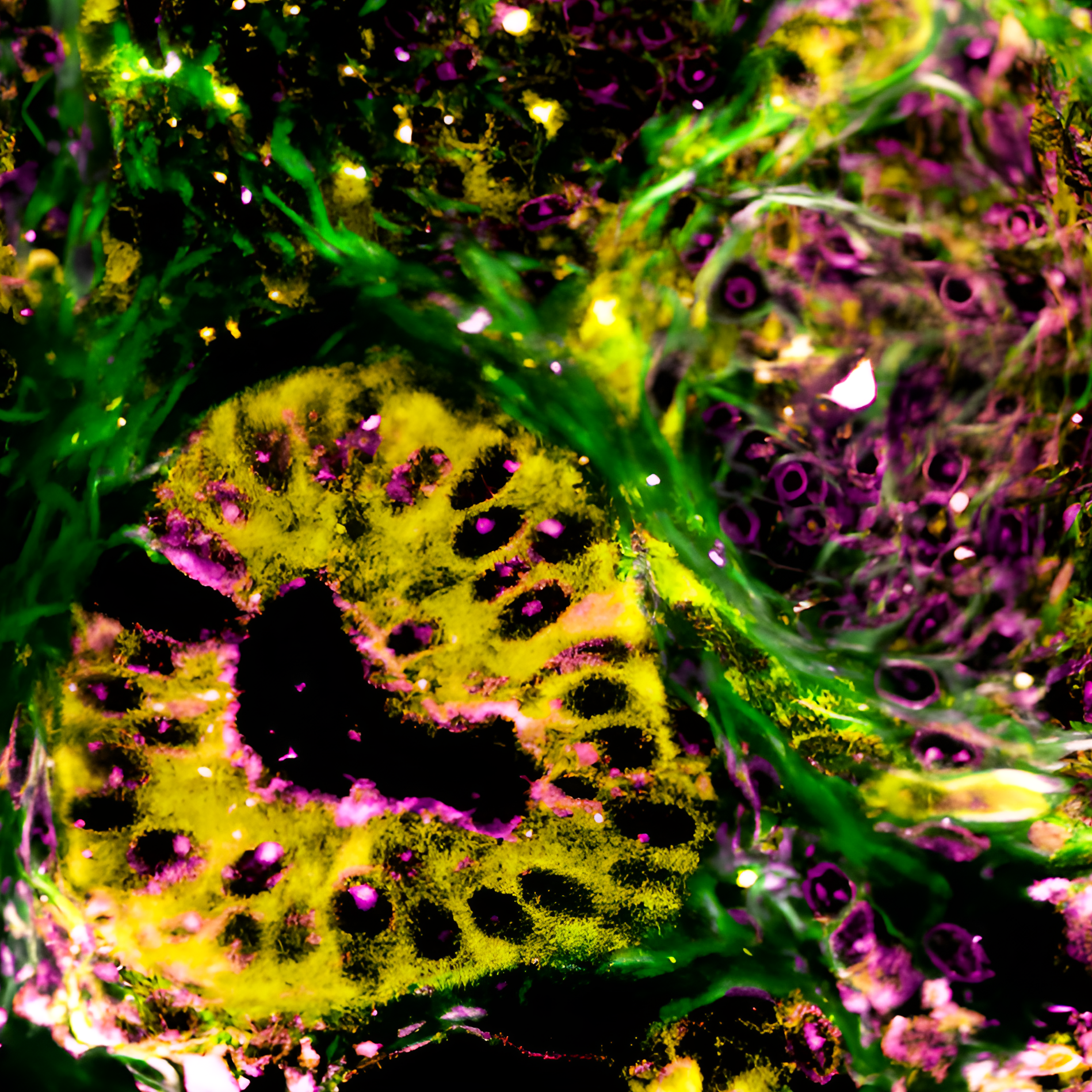 Simultaneous Label-free Imaging of Nucleolar Dynamics and Subcellular Metabolic Shifts Across Tissue ContextsKunzan Liu, Ellen L Kan, Honghao Cao, Jiashu Han, Giovanni de Nola, Linda G Griffith, Eliezer Calo, and Sixian YoubioRxiv, 2025
Simultaneous Label-free Imaging of Nucleolar Dynamics and Subcellular Metabolic Shifts Across Tissue ContextsKunzan Liu, Ellen L Kan, Honghao Cao, Jiashu Han, Giovanni de Nola, Linda G Griffith, Eliezer Calo, and Sixian YoubioRxiv, 2025
2024
-
 Spectral-temporal-spatial Customization via Modulating Multimodal Nonlinear Pulse PropagationTong Qiu, Honghao Cao, Kunzan Liu, Li-Yu Yu, Manuel Levy, Eva Lendaro, Fan Wang, and Sixian YouNature Communications, 2024
Spectral-temporal-spatial Customization via Modulating Multimodal Nonlinear Pulse PropagationTong Qiu, Honghao Cao, Kunzan Liu, Li-Yu Yu, Manuel Levy, Eva Lendaro, Fan Wang, and Sixian YouNature Communications, 2024Multimode fibers (MMFs) are gaining renewed interest for nonlinear effects due to their high-dimensional spatiotemporal nonlinear dynamics and scalability for high power. High-brightness MMF sources with effective control of the nonlinear processes would offer possibilities in many areas from high-power fiber lasers, to bioimaging and chemical sensing, and to intriguing physics phenomena. Here we present a simple yet effective way of controlling nonlinear effects at high peak power levels. This is achieved by leveraging not only the spatial but also the temporal degrees of freedom during multimodal nonlinear pulse propagation in step-index MMFs, using a programmable fiber shaper that introduces time-dependent disorders. We achieve high tunability in MMF output fields, resulting in a broadband high-peak-power source. Its potential as a nonlinear imaging source is further demonstrated through widely tunable two-photon and three-photon microscopy. These demonstrations provide possibilities for technology advances in nonlinear optics, bioimaging, spectroscopy, optical computing, and material processing.
@article{qiu2024spectral, title = {Spectral-temporal-spatial Customization via Modulating Multimodal Nonlinear Pulse Propagation}, author = {Qiu, Tong and Cao, Honghao and Liu, Kunzan and Yu, Li-Yu and Levy, Manuel and Lendaro, Eva and Wang, Fan and You, Sixian}, journal = {Nature Communications}, volume = {15}, number = {1}, pages = {2031}, year = {2024}, publisher = {Nature Publishing Group UK London} } -
 Deep and Dynamic Metabolic and Structural Imaging in Living TissuesKunzan Liu, Honghao Cao, Kasey Shashaty, Li-Yu Yu, Sarah Spitz, Francesca Michela Pramotton, Zhengpeng Wan, Ellen L. Kan, Erin N. Tevonian, Manuel Levy, Eva Lendaro, Roger D. Kamm, Linda G. Griffith, Fan Wang, Tong Qiu, and Sixian YouScience Advances, 2024
Deep and Dynamic Metabolic and Structural Imaging in Living TissuesKunzan Liu, Honghao Cao, Kasey Shashaty, Li-Yu Yu, Sarah Spitz, Francesca Michela Pramotton, Zhengpeng Wan, Ellen L. Kan, Erin N. Tevonian, Manuel Levy, Eva Lendaro, Roger D. Kamm, Linda G. Griffith, Fan Wang, Tong Qiu, and Sixian YouScience Advances, 2024Label-free imaging through two-photon autofluorescence of NAD(P)H allows for nondestructive, high-resolution visualization of cellular activities in living systems. However, its application to thick tissues has been restricted by its limited penetration depth within 300 μm, largely due to light scattering. Here, we demonstrate that the imaging depth for NAD(P)H can be extended to more than 700 μm in living engineered human multicellular microtissues by adopting multimode fiber-based, low repetition rate, high peak power, three-photon excitation of NAD(P)H at 1100 nm. This is achieved by having more than 0.5 megawatts peak power at the band of 1100±25 nm through adaptively modulating multimodal nonlinear pulse propagation with a compact fiber shaper. Moreover, the eightfold increase in pulse energy enables faster imaging of monocyte behaviors in the living multicellular models. These results represent a substantial advance for deep and dynamic imaging of intact living biosystems. The modular design is anticipated to allow wide adoption for demanding imaging applications, including cancer research, immune responses, and tissue engineering.
@article{liu2024deep, title = {Deep and Dynamic Metabolic and Structural Imaging in Living Tissues}, author = {Liu, Kunzan and Cao, Honghao and Shashaty, Kasey and Yu, Li-Yu and Spitz, Sarah and Pramotton, Francesca Michela and Wan, Zhengpeng and Kan, Ellen L. and Tevonian, Erin N. and Levy, Manuel and Lendaro, Eva and Kamm, Roger D. and Griffith, Linda G. and Wang, Fan and Qiu, Tong and You, Sixian}, journal = {Science Advances}, volume = {10}, number = {50}, pages = {eadp2438}, year = {2024}, }
2023
-
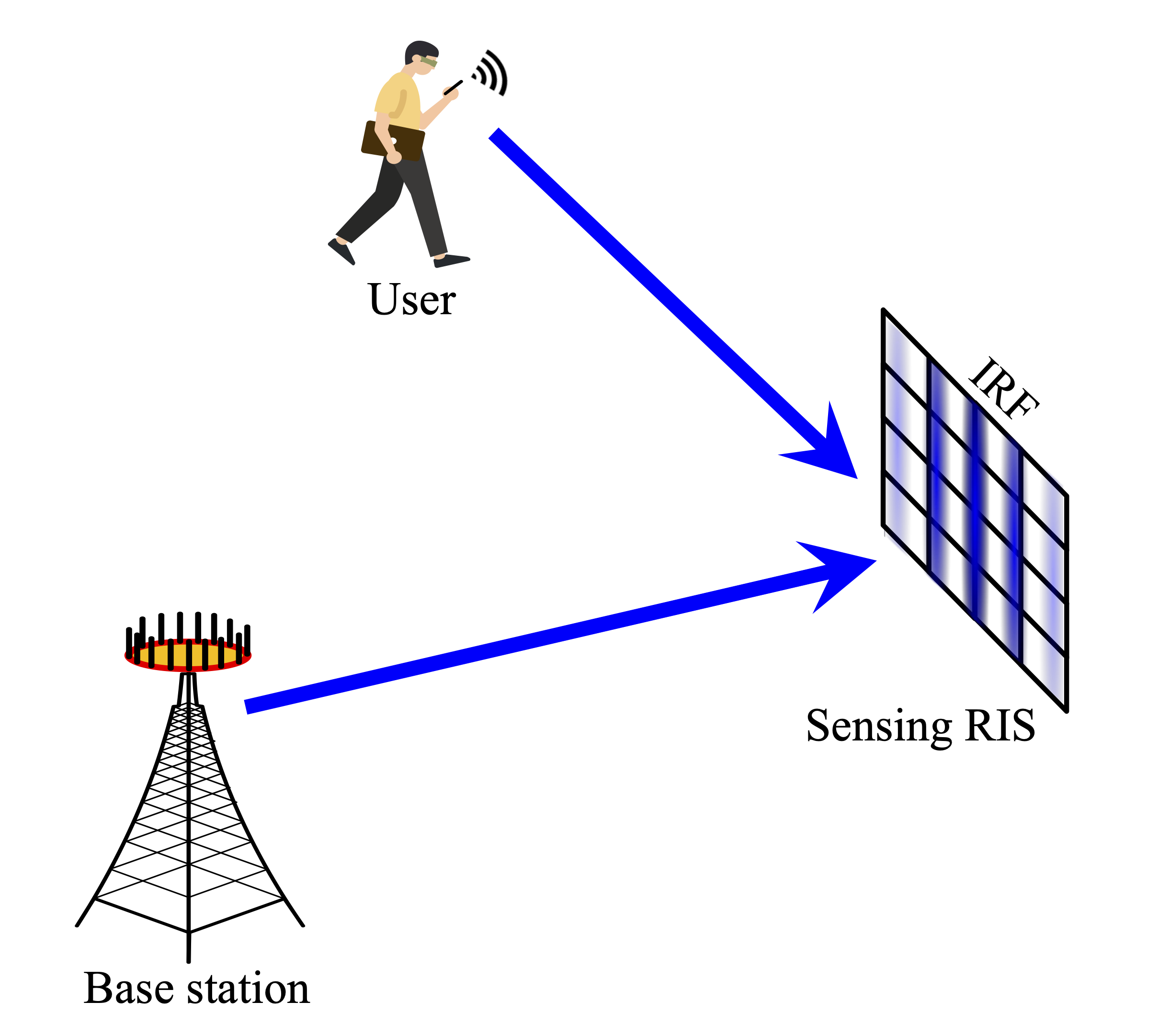 Sensing RISs: Enabling Dimension-Independent CSI Acquisition for BeamformingJieao Zhu, Kunzan Liu, Zhongzhichao Wan, Linglong Dai, Tie Jun Cui, and H. Vincent PoorIEEE Transactions on Information Theory, 2023
Sensing RISs: Enabling Dimension-Independent CSI Acquisition for BeamformingJieao Zhu, Kunzan Liu, Zhongzhichao Wan, Linglong Dai, Tie Jun Cui, and H. Vincent PoorIEEE Transactions on Information Theory, 2023Reconfigurable intelligent surfaces (RISs) are envisioned as a potentially transformative technology for future wireless communications. However, RISs’ inability to process signals and the attendant increased channel dimension have brought new challenges to RIS-assisted systems, including significantly increased pilot overhead required for channel estimation. To address these problems, several prior contributions that enhance the hardware architecture of RISs or develop algorithms to exploit the channels’ mathematical properties have been made, where the required pilot overhead is reduced to be proportional to the number of RIS elements. In this paper, we propose a dimension-independent channel state information (CSI) acquisition approach in which the required pilot overhead is independent of the number of RIS elements. Specifically, in contrast to traditional signal transmission methods, where signals from the base station (BS) and the users are transmitted in different time slots, we propose a novel method in which signals are transmitted from the BS and the user simultaneously during CSI acquisition. With this method, an electromagnetic interference random field (IRF) will be induced on the RIS, and we propose the structure of sensing RIS to capture its features. Moreover, we develop three algorithms for parameter estimation in this system, in which one of the proposed vM-EM algorithm is analyzed with the fixed-point perturbation method to obtain an asymptotic achievable bound. In addition, we also derive the Cramér-Rao lower bound (CRLB) and an asymptotic expression for characterizing the best possible performance of the proposed algorithms. Simulation results verify that our proposed signal transmission method and the corresponding algorithms can achieve dimension-independent CSI acquisition for beamforming.
@article{zhu2023sensing, title = {Sensing RISs: Enabling Dimension-Independent CSI Acquisition for Beamforming}, author = {Zhu, Jieao and Liu, Kunzan and Wan, Zhongzhichao and Dai, Linglong and Cui, Tie Jun and Poor, H. Vincent}, journal = {IEEE Transactions on Information Theory}, volume = {69}, number = {6}, pages = {3795--3813}, year = {2023}, publisher = {IEEE}, }
2022
-
 Compact User-Specific Reconfigurable Intelligent Surfaces for Uplink TransmissionIEEE Transactions on Communications, 2022
Compact User-Specific Reconfigurable Intelligent Surfaces for Uplink TransmissionIEEE Transactions on Communications, 2022Large-scale antenna arrays employed by the base station (BS) constitute an essential next-generation communications technique. However, due to the constraints of size, cost, and power consumption, it is usually considered unrealistic to use a large-scale antenna array at the user side. Inspired by the emerging technique of reconfigurable intelligent surfaces (RIS), we firstly propose the concept of user-specific RIS (US-RIS) for facilitating the employment of a large-scale antenna array at the user side in a cost- and energy-efficient way. In contrast to the existing employments of RIS, which belong to the family of base-station-specific RISs (BSS-RISs), the US-RIS concept by definition facilitates the employment of RIS at the user side for the first time. This is achieved by conceiving a multi-layer structure to realize a compact form-factor. Furthermore, our theoretical results demonstrate that, in contrast to the existing single-layer structure, where only the phase of the signal reflected from RIS can be adjusted, the amplitude of the signal penetrating multi-layer US-RIS can also be partially controlled, which brings about a new degree of freedom (DoF) for beamformer design that can be beneficially exploited for performance enhancement. In addition, based on the proposed multi-layer US-RIS, we formulate the signal-to-noise ratio (SNR) maximization problem of US-RIS-aided communications. Due to the non-convexity of the problem introduced by this multi-layer structure, we propose a multi-layer transmit beamformer design relying on an iterative algorithm for finding the optimal solution by alternately updating each variable. Finally, our simulation results verify the superiority of the proposed multi-layer US-RIS as a compact realization of a large-scale antenna array at the user side for uplink transmission.
@article{liu2022compact, title = {Compact User-Specific Reconfigurable Intelligent Surfaces for Uplink Transmission}, author = {Liu, Kunzan and Zhang, Zijian and Dai, Linglong and Hanzo, Lajos}, journal = {IEEE Transactions on Communications}, volume = {70}, number = {1}, pages = {680--692}, year = {2022}, publisher = {IEEE}, } -
 Active Reconfigurable Intelligent Surface: Fully-Connected or Sub-Connected?IEEE Communications Letters, 2022
Active Reconfigurable Intelligent Surface: Fully-Connected or Sub-Connected?IEEE Communications Letters, 2022To overcome the “multiplicative fading effect” introduced by passive reconfigurable intelligent surface (RIS), the concept of active RIS has been recently proposed to amplify the radiated signals. However, the existing fully-connected architecture of active RIS consumes high power due to the additionally integrated active components. To address this issue, we propose the sub-connected architecture of active RIS. Different from fully-connected architecture, where each element integrates a dedicated power amplifier, in the sub-connected architecture, multiple elements control their phase shifts independently but share a same power amplifier, which significantly reduces the number of power amplifiers for power saving at the cost of fewer degrees of freedom (DoFs) for beamforming design. Fortunately, our analysis reveals that performance loss introduced by the subconnected architecture is slight, indicating that it can achieve much higher energy efficiency (EE). Furthermore, we formulate the EE maximization problem in the active RIS-aided system for both architectures and develop a corresponding joint beamforming design. Simulation results verify the proposed sub-connected architecture as an energy-efficient realization of active RIS.
@article{liu2022active, title = {Active Reconfigurable Intelligent Surface: Fully-Connected or Sub-Connected?}, author = {Liu, Kunzan and Zhang, Zijian and Dai, Linglong and Xu, Shenheng and Yang, Fan}, journal = {IEEE Communications Letters}, volume = {26}, number = {1}, pages = {167--171}, year = {2022}, publisher = {IEEE}, } -
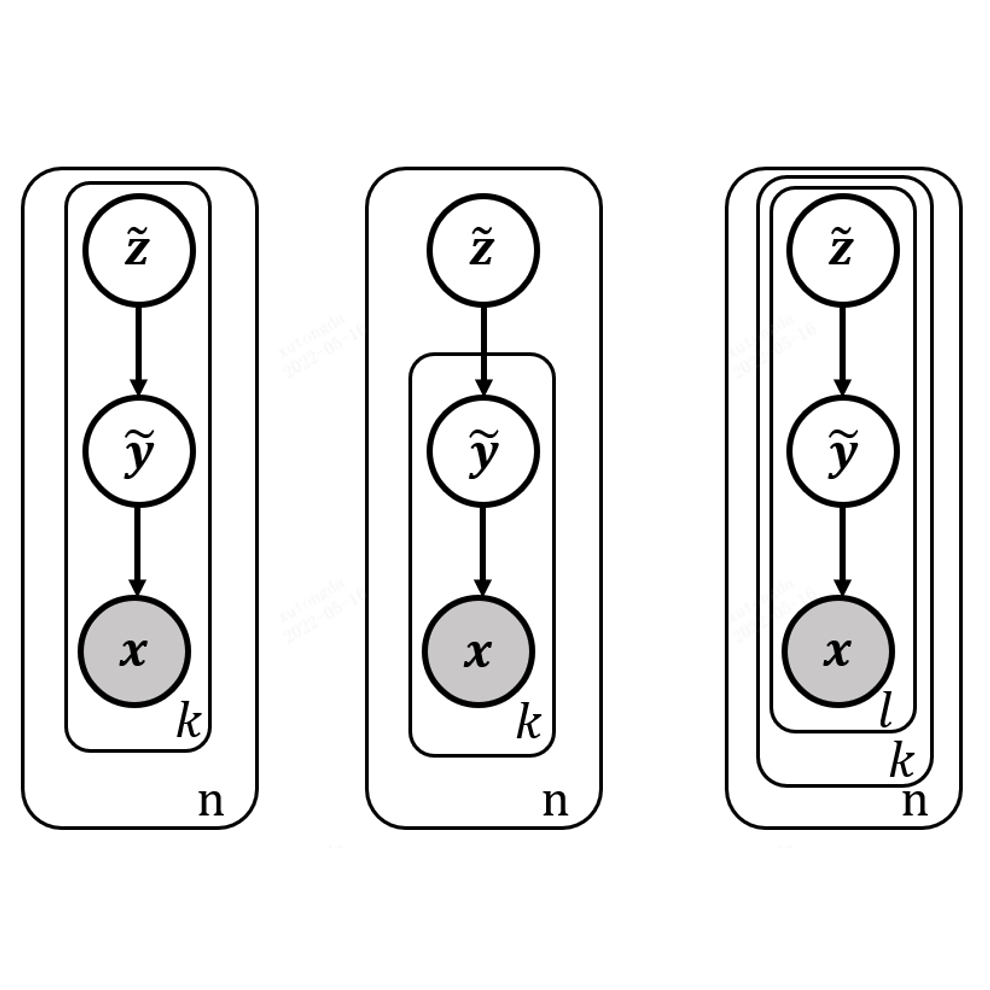 Multiple-Sample Training for Neural Image CompressionTongda Xu, Yan Wang, Dailan He, Chenjian Gao, Han Gao, Kunzan Liu, and Hongwei QinAdvances in Neural Information Processing Systems (NIPS), 2022
Multiple-Sample Training for Neural Image CompressionTongda Xu, Yan Wang, Dailan He, Chenjian Gao, Han Gao, Kunzan Liu, and Hongwei QinAdvances in Neural Information Processing Systems (NIPS), 2022This paper considers the problem of lossy neural image compression (NIC). Current state-of-the-art (sota) methods adopt uniform posterior to approximate quantization noise, and single-sample pathwise estimator to approximate the gradient of evidence lower bound (ELBO). In this paper, we propose to train NIC with multiple-sample importance weighted autoencoder (IWAE) target, which is tighter than ELBO and converges to log likelihood as sample size increases. First, we identify that the uniform posterior of NIC has special properties, which affect the variance and bias of pathwise and score function estimators of the IWAE target. Moreover, we provide insights on a commonly adopted trick in NIC from gradient variance perspective. Based on those analysis, we further propose multiple-sample NIC (MS-NIC), an enhanced IWAE target for NIC. Experimental results demonstrate that it improves sota NIC methods. Our MS-NIC is plug-and-play, and can be easily extended to other neural compression tasks.
@article{xu2022multiple, title = {Multiple-Sample Training for Neural Image Compression}, author = {Xu, Tongda and Wang, Yan and He, Dailan and Gao, Chenjian and Gao, Han and Liu, Kunzan and Qin, Hongwei}, journal = {Advances in Neural Information Processing Systems (NIPS)}, volume = {35}, pages = {1502--1515}, year = {2022}, }
2021
-
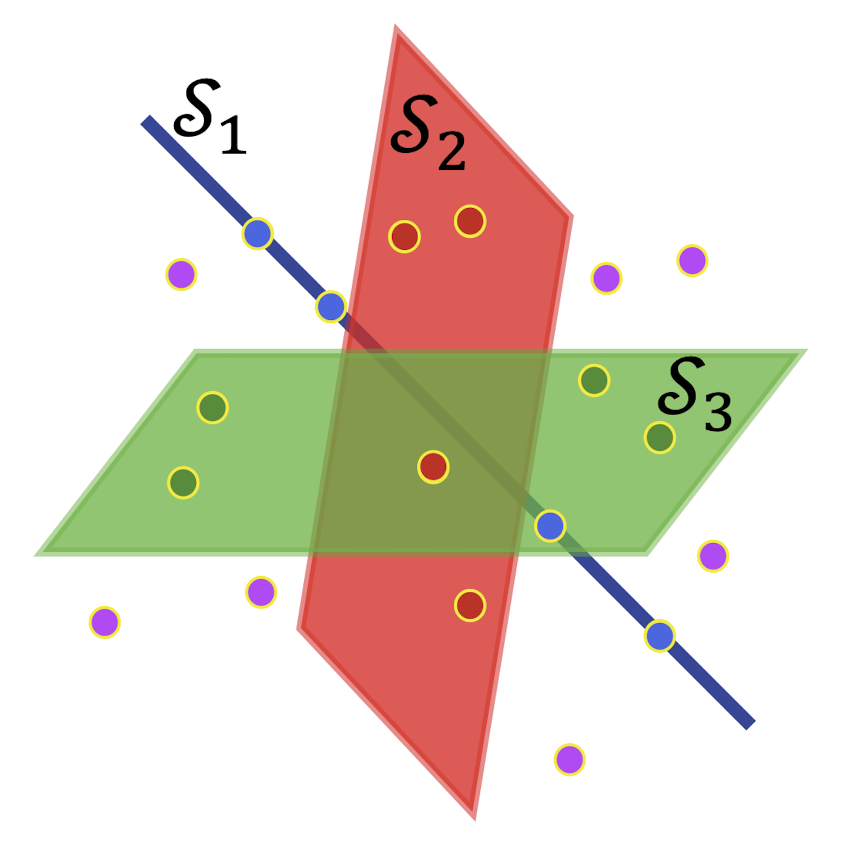 Dimensionality-reduced Secure Outlier Detection on Union of SubspacesKunzan Liu, Yuchen Jiao, Ye Jin, Xu Xiang, and Yuantao GuIEEE International Conference on Cryptography, Security and Privacy (CSP), 2021
Dimensionality-reduced Secure Outlier Detection on Union of SubspacesKunzan Liu, Yuchen Jiao, Ye Jin, Xu Xiang, and Yuantao GuIEEE International Conference on Cryptography, Security and Privacy (CSP), 2021In the problem of outlier detection (OD) on a union of subspaces (UoS), inliers are assumed to lie around a union of low-dimensional subspaces, and the goal is to detect the outliers that are not close to any of these subspaces. Among various algorithms, sparse self-representation-based ones have attracted much attention because of their theoretical performance guarantee. However, these algorithms need direct access to all raw data, and thus have poor data security and privacy protection capability. To solve this problem, in this paper we propose a new algorithm called dimensionality-reduced secure outlier detection (DrSOD), which uses random projection as a preprocessing step to avoid direct access to the raw data. We theoretically prove that DrSOD can correctly detect outliers with overwhelming probability under connectivity assumptions. In addition, the random projection step improves the computational efficiency of the algorithm. Experiments on synthetic and real-world datasets also demonstrate the effectiveness and efficiency of DrSOD.
@article{liu2021dimensionality, title = {Dimensionality-reduced Secure Outlier Detection on Union of Subspaces}, author = {Liu, Kunzan and Jiao, Yuchen and Jin, Ye and Xiang, Xu and Gu, Yuantao}, journal = {IEEE International Conference on Cryptography, Security and Privacy (CSP)}, pages = {101--106}, year = {2021}, publisher = {IEEE}, } -
 On The Energy-Efficiency Fairness of Reconfigurable Intelligent Surface-Aided Cell-Free NetworkKunzan Liu, and Zijian ZhangIEEE Vehicular Technology Conference (VTC), 2021
On The Energy-Efficiency Fairness of Reconfigurable Intelligent Surface-Aided Cell-Free NetworkKunzan Liu, and Zijian ZhangIEEE Vehicular Technology Conference (VTC), 2021With the ability to overcome the inter-cell interferences, cell-free network is a promising network paradigm to achieve high spectrum efficiency for future 6G communications. However, the increasing number of distributed base stations in cell-free network introduces very high power consumption. To address this issue, inspired by the reconfigurable intelligent surface (RIS) technique with low power consumption, the concept of RIS-aided cell-free network has been recently proposed to improve the spectrum efficiency at a low cost of power consumption. In this paper, we take a further step to investigate the energy-efficiency fairness (EEF) of RIS-aided cell-free network. Specifically, we formulate the precoding design problem to maximize the energy efficiency of the worst user in a wideband RIS-aided cell-free network. To solve this problem, we then propose an iterative precoding algorithm by using Lagrangian transform and fractional programming (FP) to tackle the highly decoupled optimization objective. Through alternatingly solving subproblems of subcarrier assignment, power allocation, combining, and precoding, the objective will finally converge. Simulation results demonstrate the effectiveness of the proposed precoding algorithm, and the energy efficiency of users in cell-free network can be efficiently increased by the aid of RISs.
@article{liu2021on, title = {On The Energy-Efficiency Fairness of Reconfigurable Intelligent Surface-Aided Cell-Free Network}, author = {Liu, Kunzan and Zhang, Zijian}, journal = {IEEE Vehicular Technology Conference (VTC)}, pages = {1--6}, year = {2021}, publisher = {IEEE}, } -
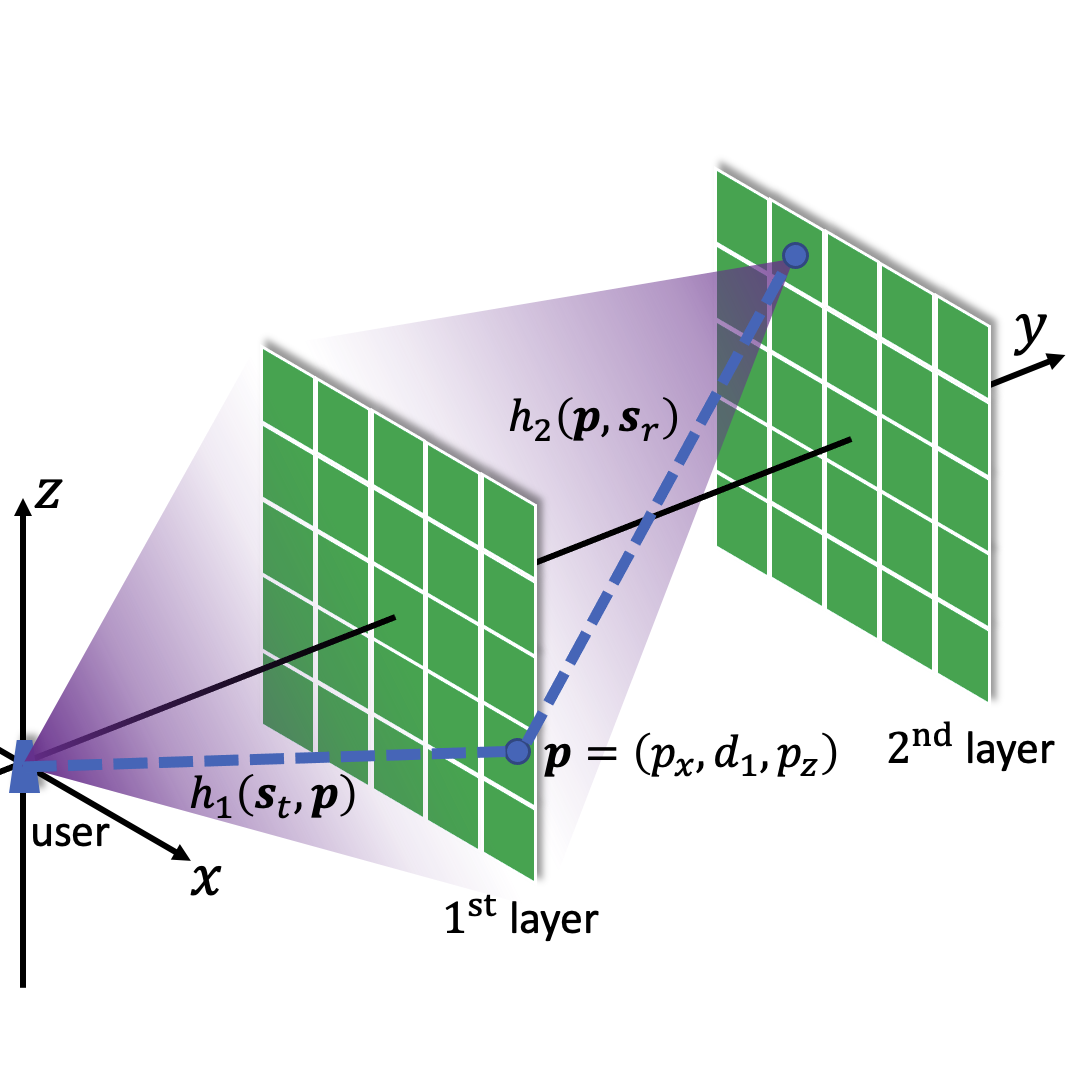 User-Side RIS: Realizing Large-Scale Array at User SideKunzan Liu, Zijian Zhang, and Linglong DaiIEEE Global Communications Conference (GLOBECOM), 2021
User-Side RIS: Realizing Large-Scale Array at User SideKunzan Liu, Zijian Zhang, and Linglong DaiIEEE Global Communications Conference (GLOBECOM), 2021Massive multiple-input multiple-output (MIMO) with a large-scale antenna array at the base station (BS) side is one of the most essential techniques for 5G wireless communications. However, due to the forbidden hardware cost and mismatched size, it is physically limited to deploy massive MIMO at the user side. To break this limitation, inspired by the promising technique called reconfigurable intelligent surface (RIS), we firstly propose the concept of user-side RIS (US-RIS) which is a cost- and energy-efficient realization for large-scale array at the user side. Different from the existing RISs that work as base-station-side RISs (BSS-RISs), US-RIS is the first usage of RIS at the user side. Then, we propose a novel architecture of user with the aid of US-RIS with a multi-layer structure for compact implementation. Based on the proposed multi-layer US-RIS, we formulate the signal-to-noise ratio (SNR) maximization problem in the US-RIS-aided communications. To tackle the challenge of solving this non-convex problem, we propose a multi-layer precoding design that can obtain the optimal parameters at transceivers and US-RIS by iterative optimization. Finally, simulation results are shown to verify the practicability and superiorities of the proposed multi-layer US-RIS as a realization of the large-scale array at the user side.
@article{liu2021user, title = {User-Side RIS: Realizing Large-Scale Array at User Side}, author = {Liu, Kunzan and Zhang, Zijian and Dai, Linglong}, journal = {IEEE Global Communications Conference (GLOBECOM)}, pages = {1--6}, year = {2021}, publisher = {IEEE}, }